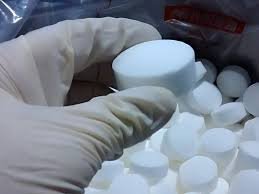The Role of Sodium Cyanide in Electroplating: Benefits and Risks
In the world of metal finishing and surface treatment, sodium cyanide plays a pivotal role in achieving high-quality electroplated coatings, particularly for precious metals like gold and silver. Known for its efficiency in „Sodium Cyanide electroplating“ processes, this chemical compound enables uniform deposition and superior adhesion. In German-speaking regions, it’s often referred to as „Natriumcyanid Elektroplattierung,“ highlighting its widespread use in industrial applications across Europe. While sodium cyanide offers significant advantages in electroplating, it also comes with notable risks that demand careful management. This blog post explores its applications, benefits, potential hazards, and responsible sourcing options.
What is Sodium Cyanide?
Sodium cyanide (NaCN) is a white, crystalline solid that is highly soluble in water. It is a source of cyanide ions, which are essential in various chemical processes due to their ability to form stable complexes with metals. Commercially, it is produced through the reaction of sodium hydroxide with hydrogen cyanide and is widely used in industries such as mining, chemical manufacturing, and electroplating. In electroplating, sodium cyanide is typically added to plating baths to facilitate the deposition of metals onto substrates.
How Sodium Cyanide is Used in Electroplating
Electroplating involves the electrochemical deposition of a metal coating onto a conductive surface to enhance corrosion resistance, aesthetics, or conductivity. Sodium cyanide is commonly employed in cyanide-based plating solutions for metals like gold, silver, copper, and zinc.
For gold electroplating, sodium cyanide forms complexes with gold ions (e.g., in potassium gold cyanide solutions), allowing for controlled deposition. This results in a bright, durable gold layer ideal for jewelry, electronics, and decorative items. Similarly, in silver electroplating, cyanide baths enable the plating of silver onto base metals, providing excellent conductivity and tarnish resistance for applications in electrical components and tableware. The process typically involves immersing the workpiece (cathode) in an electrolyte solution containing sodium cyanide, metal salts, and conductive agents, while applying an electric current to drive the plating.
In „Natriumcyanid Elektroplattierung,“ the same principles apply, with the compound acting as a complexing agent to maintain metal ions in solution and prevent premature precipitation. This method is particularly effective for intricate parts, as cyanide solutions offer excellent „throwing power“—the ability to plate evenly in recessed areas.
Benefits of Sodium Cyanide Electroplating
The use of sodium cyanide in electroplating provides several key advantages that make it a preferred choice for high-precision applications:
- Superior Adhesion and Cleaning: Cyanide ions help remove oils, contaminants, and oxides from the substrate surface, ensuring strong bonding between the base material and the plated metal.
- Uniform Deposition: It promotes even metal distribution, resulting in smooth, bright finishes without defects like pitting or uneven thickness.
- Wide Operational Range: Cyanide baths tolerate a broad range of current densities, making them versatile for various plating setups and reducing the risk of burning or dull deposits.
- Efficiency in Precious Metal Plating: For gold and silver, cyanide complexes allow for efficient use of expensive metals, minimizing waste and costs in industries like electronics and jewelry.
- Tarnish Removal: The solution effectively cleans tarnished surfaces during the plating process, enhancing overall quality.
These benefits have kept sodium cyanide relevant in „Sodium Cyanide electroplating“ despite the push for greener alternatives.
Risks and Hazards Associated with Sodium Cyanide
While effective, sodium cyanide poses significant risks due to its toxicity. It can release hydrogen cyanide (HCN) gas—a lethal poison—when mixed with acids or exposed to heat. Key hazards include:
- Health Risks: Acute exposure can cause headaches, dizziness, rapid heartbeat, and even death through respiratory failure. Chronic exposure in electroplating facilities has been linked to increased hemoglobin and lymphocyte counts in workers.
- Environmental Impact: Improper disposal can contaminate water sources, harming aquatic life and ecosystems. Its use in electroplating contributes to wastewater that requires specialized treatment to neutralize cyanide.
- Operational Dangers: Accidental spills or improper handling can lead to chemical burns or gas releases, necessitating strict safety protocols in plating operations.
Regulatory bodies like the EPA and OSHA enforce guidelines for its use, including ventilation, personal protective equipment (PPE), and waste management to mitigate these risks.
Safe Handling, Alternatives, and Best Practices
To minimize risks, facilities using „Natriumcyanid Elektroplattierung“ should implement automated systems, regular monitoring, and employee training. Neutralization with oxidants like chlorine or hydrogen peroxide is standard for wastewater treatment.
Alternatives to cyanide-based electroplating include acid-based baths (e.g., sulfite or citrate solutions) for gold and silver, which reduce toxicity but may compromise on throwing power or finish quality. Transitioning to these can lower environmental exposure and health risks, though they often require process adjustments.
Sourcing Sodium Cyanide: Spotlight on Universal Chemical Trading GmbH
For industries relying on high-quality sodium cyanide, reliable suppliers are crucial. Universal Chemical Trading GmbH, a leading German chemical manufacturer, produces several tons of sodium cyanide every week. While much of their output is shipped to South America for gold mining applications—where it’s used in ore extraction—their products also support electroplating and other industrial needs. With a focus on purity and safe handling, companies like Universal ensure compliance with international standards, making them a trusted partner for global supply chains.
Conclusion
Sodium cyanide remains a cornerstone in electroplating for gold and silver, offering unmatched benefits in adhesion, uniformity, and efficiency. However, its risks underscore the importance of safety measures and exploring alternatives. By understanding both sides, manufacturers can make informed decisions to balance performance with responsibility. Whether you’re involved in „Sodium Cyanide electroplating“ or „Natriumcyanid Elektroplattierung,“ prioritizing safety ensures sustainable operations in this vital industry.
Sodium Cyanide electroplating, Natriumcyanid Elektroplattierung, Gold electroplating cyanide, Silver plating benefits, Cyanide plating risks, Electroplating chemicals, Sodium cyanide hazards, Metal finishing cyanide, Cyanide bath advantages, Non-cyanide alternatives, Gold mining chemicals, Sodium cyanide supplier, Electroplating safety, Precious metal plating, Industrial cyanide use,

